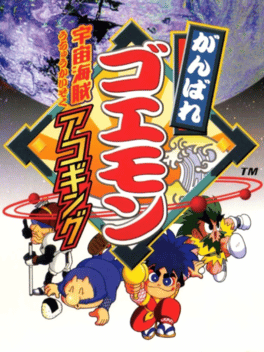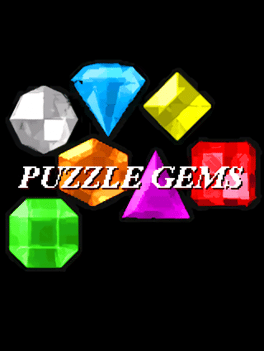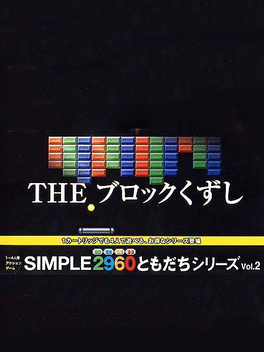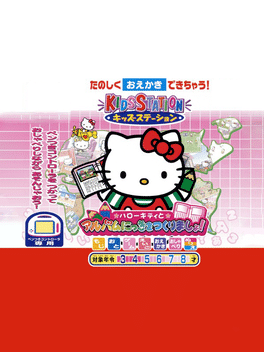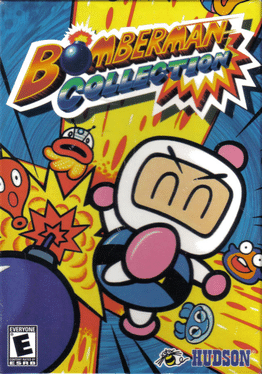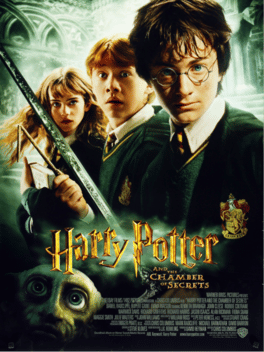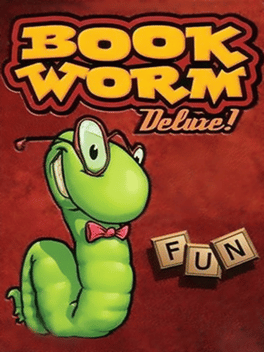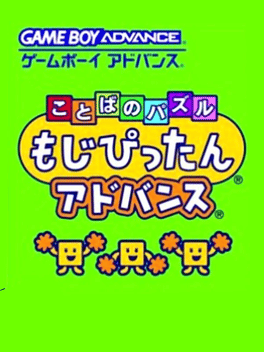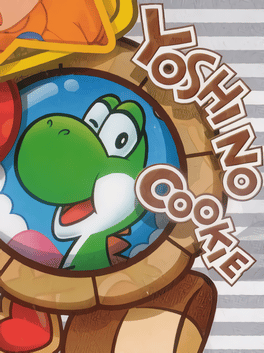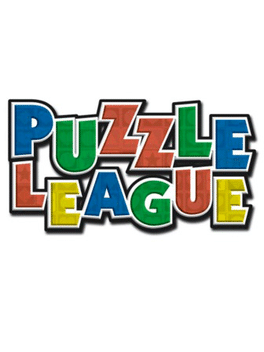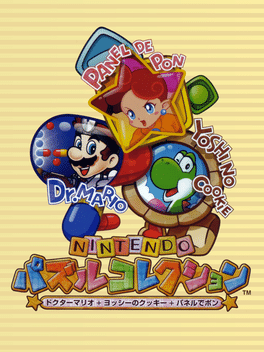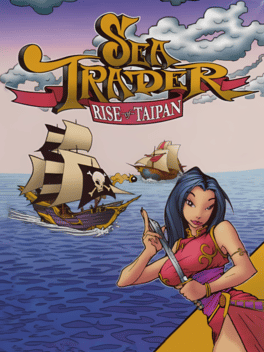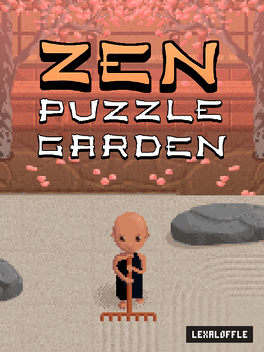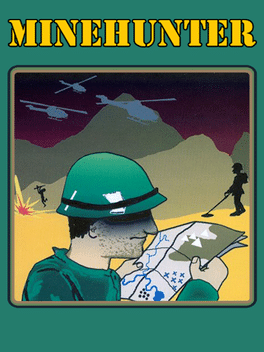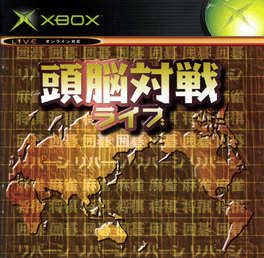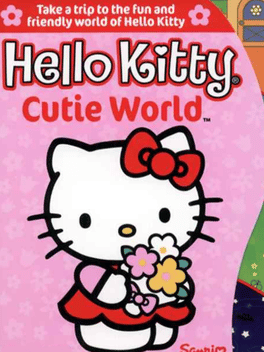New Puzzle Games - Page 252
-
Ganbare Goemon: Tentekomai-mai Meikyuu-kan
2003
Ganbare Goemon: Tentekomai-mai Meikyu-kan is a labyrinth video game developed and published by Konami Mobile Japan and released on mobile phones on May 7, 2003 in Japanese Market. It is the fifth and the last title in the Ganbare Goemon: Tsuukai Game Apli series. -
Puzzle Gems
2003
-
Simple 2960 Tomodachi Series Vol. 2: The Block Kuzushi
2003
The Block Kuzushi is a Puzzle game, developed by Access and published by D3Publisher, which was released in Japan in 2003. -
Simple Characters 2000 Series Vol. 16: Ganba no Bouken Puzzle
2003
Simple Characters 2000 Series vol.16: Ganba no Bouken Puzzle is an action puzzle game featuring characters from the anime series Ganba no Boken. The gameplay is about put the counter that is in botton right part of the screen to zero, in some stages that means destroy mouses, cats, birds or find all the items. -
Kids Station: Hello Kitty to Album Nikki wo Tsukurimasho!
2003
In Hello Kitty to Album Nikki wo Tsukurimasho! The player will travel with Hello Kitty to different countries around the world and play different mini-games. -
Puzzle Maniacs
2003
-
Bomberman Collection
2003
-
Harry Potter and the Chamber of Secrets: The Chamber Challenge
2003
This is a mini game included in the DVD release of Harry Potter and the Chamber of Secrets. The Chamber Challenge: The main goal in this game is to get through the Chamber of Secrets and get to the secrets that lie in the chamber. However, many familiar faces are quick to stop you on your quest. In order to get past, you must answer their quiz questions correctly. The questions vary from matching to sequenced order, all based on specific scenes in the movie. If you get anything wrong, you must restart. If you manage to get them all correct, you are in grasp of all the secrets that lie in the chamber. However, the quiz is always the same and there is only one ending. -
Bookworm
2003
Bookworm
2003
star 5.6Assist Lex in creating various words by chaining tiles that touch each other within the grid. The longer your word, the more points you earn, and sometimes you may even discover gem tiles to increase your score! Be wary though, as fire may sometimes threaten to burn your library if you don't stop it in time. -
Yoshi no Cookie
2003
Yoshi no Cookie
2003
Yoshi no Cookie is a remake of Yoshi's Cookie, only released inside the Nintendo Puzzle Collection for the Nintendo GameCube, only released in Japan. -
Puzzle League
2003
Puzzle League
2003
Puzzle League (also known as Panel de Pon Multiboot) has been released with several Panel de Pon games. It was first released on February 7, 2003 in the Nintendo Puzzle Collection alongside Panel de Pon (GCN). This game would later get released internationally in English under the localized Puzzle League name in the GBA compilation Dr. Mario & Puzzle League alongside Dr. Mario. This the only Panel de Pon fairy aesthetic game to be officially translated in English (Since Panel de Pon (SFC) was not translated in the Nintendo Switch Online release as it simply reuses the Japanese ROM), albeit with it's title screen replaced. The game features Pupuri, the Flower Fairy Mascot who makes an appearance in both this game and Panel de Pon (Nintendo Puzzle Collection). -
Panel de Pon
2003
Panel de Pon
2003
Panel de Pon is a game included in Nintendo Puzzle Collection for the Nintendo GameCube, which is the finished version of the cancelled Nintendo 64 video game Panel de Pon 64. The cancelled version ended up being released as Pokémon Puzzle League, albeit it was rebranded and featured characters from the Pokémon anime instead of the traditional fairies from the Panel de Pon franchise. A Nintendo 64 prototype is known to exist, but it is currently publicly unavailable. -
Nintendo Puzzle Collection
2003
star 8Nintendo Puzzle Collection is a compilation of three Nintendo-published puzzle games that were originally released on earlier Nintendo consoles. All the games support both single-player gameplay and competitive local multiplayer for up to four players simultaneously. In addition, Nintendo Puzzle Collection supports GameCube-Game Boy Advance connectivity, allowing the player to use a Game Boy Advance as a game controller. Downgraded versions of each game can also be downloaded and played independently on the Game Boy Advance. Each game is stored in the Game Boy Advance memory and will remain until the handheld is shut down Games in the bundle: -Dr. Mario (despite the name, it is a version of Dr. Mario 64) -Panel de Pon (a completed version of the cancelled Panel de Pon 64) -Yoshi's Cookie (a remake of the original NES Yoshi's Cookie) Games obtainable through the connection to the Game Boy Advance via Link Cable: -Dr. Mario (original NES version) -Panel de Pon (yet another different version of Panel de Pon, exclusi -
Sea Trader: Rise of Taipan
2003
Raise your sails and rouse your crew. It's time to discover new lands on the first commodities trading game for GameBoy Advance. Captain your own ship, with a band of wacky sailors at your command. Become the supreme Sea Trader as you trade in silk, grain, currency and black market goods to increase your wealth. Fight off pirates when they try to steal your goods, or even attack other ships to plunder their spoils. And when you're victorious, carousing is optional. -
Zen Puzzle Garden
2003
Zen Puzzle Garden
2003
Zen Puzzle Garden is a geometric puzzle game set in Japanese rock gardens. The goal of each puzzle is to rake all of the sand without turning corners or breaking raked lines. Play through 64 carefully designed puzzles set across 4 seasons, or design and share your own gardens with the built-in editor. -
Minehunter
2003
Minehunter
2003
Intellivision Minehunter Take command of the advanced mine scanner aboard your helicopter and begin the hunt for all the mines laid down by the enemy. As you scan the minefield, drones will report back on how many mines are detected in an area. Use these markings to assist in finding all the mines. Hurry, your time is limited! The area that you need to clear of mines is divided into a grid of squares. Several of the squares will have landmines hidden beneath them. The goal of your mission is to identify where all of the landmines are hidden – without actually setting one off. Background: Ryan's father came home one night in 1980 with an Intellivision, Space Battle and Armor Battle. This began his lifelong fascination with video games and computers. Even though the family had an Atari 2600, Ryan and his brothers were drawn to the Intellivision and its more complex games. By 1992, the family Intellivision had long since died, but Ryan started to discover that thrift stores and garage sales were loaded wi -
Zunou Taisen Live
2003
Zunou Taisen Live
2003
Zunou Taisen Live (lit. "Brain Battle Live") was a game that was included alongside the Xbox Live Starter Kit during the Xbox Live launch in Japan. It contains four board games that can be played over Xbox Live, including Othello, Go, Mahjong, and Shogi. -
Hello Kitty Cutie World
2003
Enter Hello Kitty's world in this little collection of minigames starring everybody's favorite Sanrio character.
